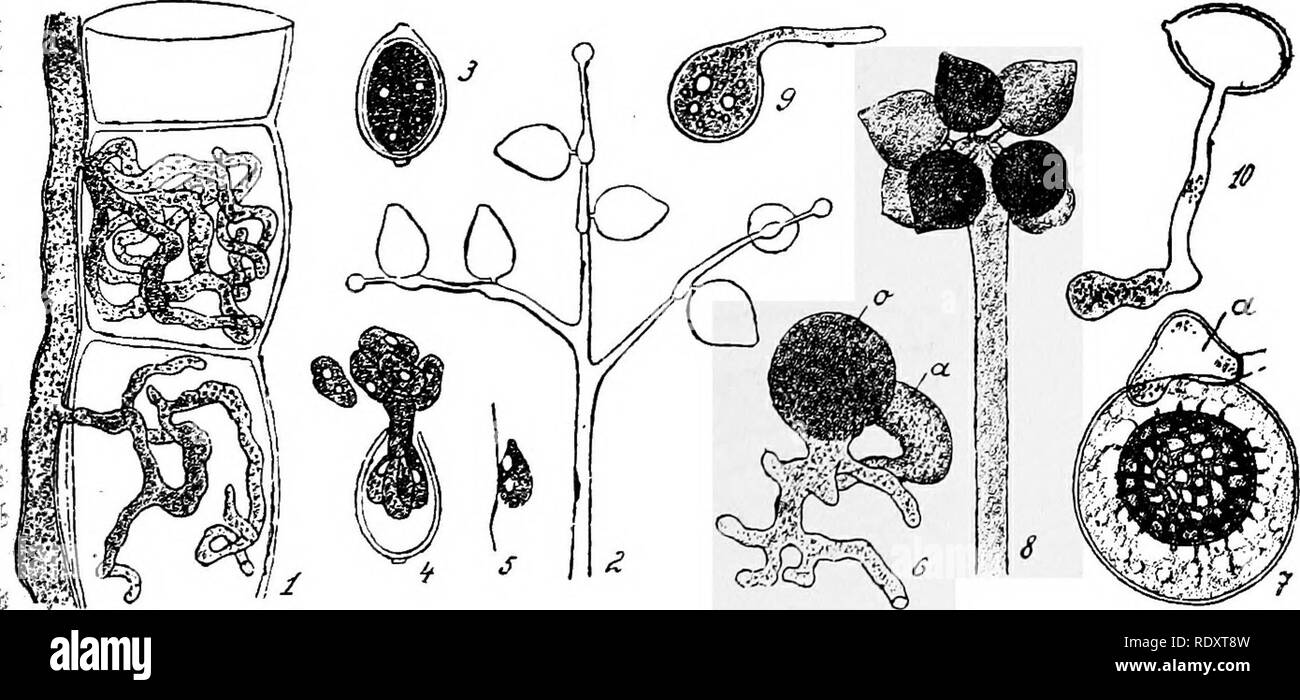. A manual of poisonous plants, chiefly of eastern North America, with brief notes on economic and medicinal plants, and numerous illustrations. Poisonous plants. EUTHALLEPHYTA—EUM YCETES—OOM YCETES 205 Many members of this group are destructive parasites to cultivated plants like the potato rot fungus {Phytopthora infestans), the onion mildew (Peron- ospora Schleideniana), the lettuce mildew {Bremia Lactucae), the mildew of the sunflower (Plasmopara Halstedii), the Clover mildew {Peronospora tri- fcliorum) which may be injurious to animals, the millet mildew (^Sclerospora gra,:.inicola) which

Image details
Contributor:
The Book Worm / Alamy Stock PhotoImage ID:
RDXT8WFile size:
7.2 MB (402 KB Compressed download)Releases:
Model - no | Property - noDo I need a release?Dimensions:
2308 x 1083 px | 39.1 x 18.3 cm | 15.4 x 7.2 inches | 150dpiMore information:
This image is a public domain image, which means either that copyright has expired in the image or the copyright holder has waived their copyright. Alamy charges you a fee for access to the high resolution copy of the image.
This image could have imperfections as it’s either historical or reportage.
. A manual of poisonous plants, chiefly of eastern North America, with brief notes on economic and medicinal plants, and numerous illustrations. Poisonous plants. EUTHALLEPHYTA—EUM YCETES—OOM YCETES 205 Many members of this group are destructive parasites to cultivated plants like the potato rot fungus {Phytopthora infestans), the onion mildew (Peron- ospora Schleideniana), the lettuce mildew {Bremia Lactucae), the mildew of the sunflower (Plasmopara Halstedii), the Clover mildew {Peronospora tri- fcliorum) which may be injurious to animals, the millet mildew (^Sclerospora gra, :.inicola) which may also be injurious. As a type of this family the downy mildew of the grape (Plasmopara viticola) may be taken. It appears during the early summer and continues till frost. Leaves, berries and stem are affected. The upper surface of the leaf shows yellow patches, underneath a white frosty mould. A section through the leaf will show the mycelium vegetating between the cells. The mycelium gives rise to the fruiting branches of the fungus, the conidiophores, which pass out through the stomata. The conidiophores are dichotomously branched, and at their ends bear the conidia. When these conidia are placed in water they begin to change, at the end of an hour, they swell and the contents divide. According to Dr. Farlow "at the expiration of an hour and a quarter the segments had resolved themselves into a number of oval bodies" which before long succeeded in rupturing the cell- wall and making their escape from the mother cell. Each of these zoospores is provided with two cilia. In some, zoospores are not produced, but the whole mass passes out, which soon produces a tube. The zoospores produce germ tubes which probably pierce the leaf of the grape. The temperature most favor- able for germination is between 25° and 35° C. Inoculation experiments with the grape vine mildew show that on the second day the disease appears. Sexual method of reproduction takes place lat